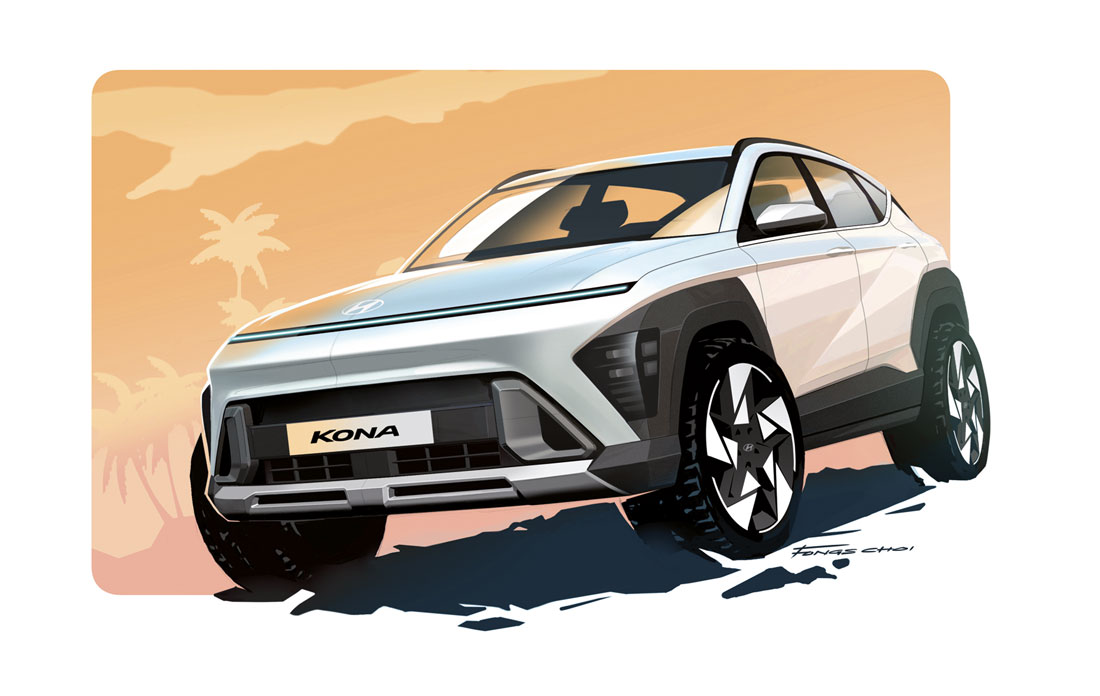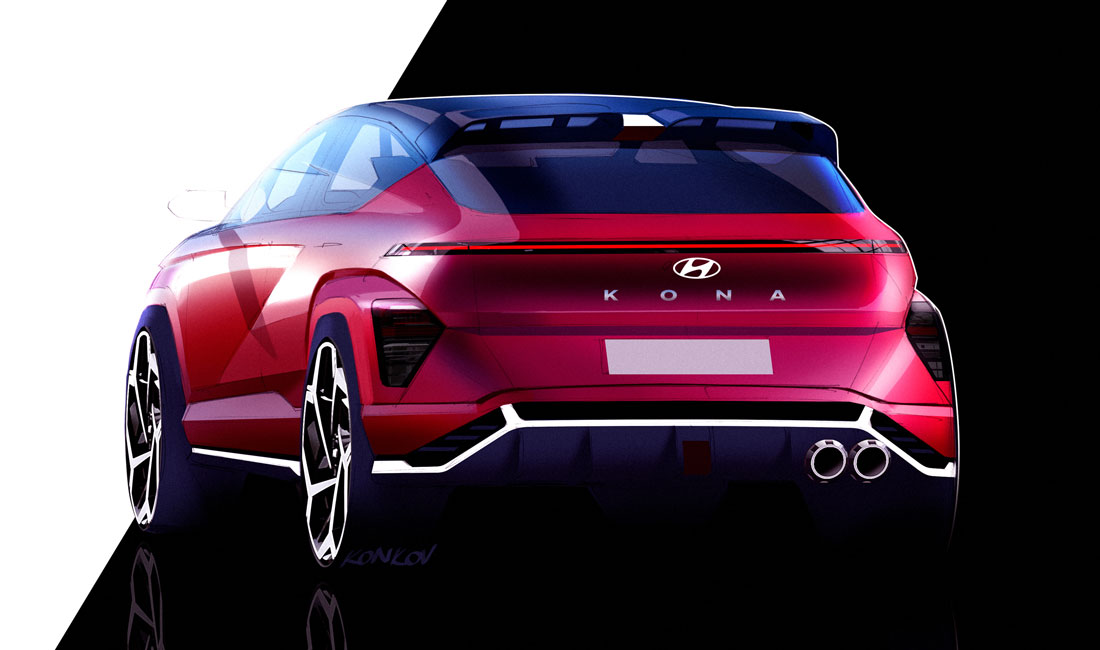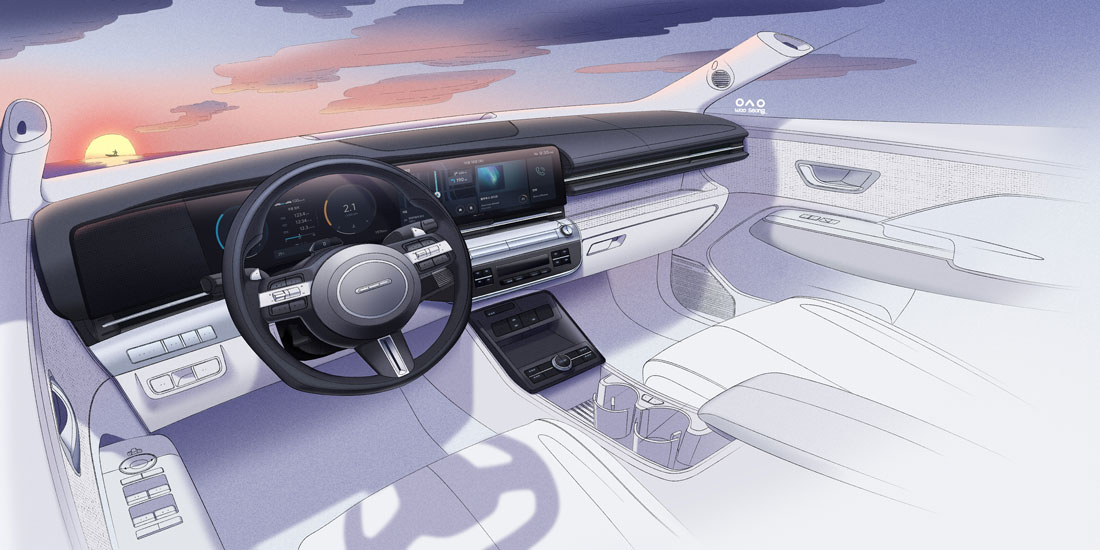The year 2017 marked the début of one of the most disruptive models in recent years: the Hyundai Kona. Its commercial success – which occurred on the European market at the time of the B-segment SUV explosion – has allowed the second generation to mature, grow in size and offer new content in terms of style and technology. “When you want to improve an already successful model, the right thing to do is to listen to the customers,” says SangYup Lee, Executive Vice President and Head of Hyundai and Genesis Global Design Centre, who we meet in Berlin at the model presentation.
Customers’ requests
So what were the customers asking for? “First of all, more space: that’s why the length was increased by 15 centimetres (almost all concentrated behind the rear wheels to increase the size of the boot, Ed.) and the wheelbase by 6 centimetres. They requested a more spacious cabin, a bigger boot and, in general, a vehicle that could be more versatile. We satisfied them by trying to combine style and function in the best possible way, but also by driving innovation”.
Focus on aerodynamics
And indeed, the design of the new Kona has changed radically from its predecessor. It remains, admittedly, a B-SUV, but the new proportions bring it closer to the upper end of the segment to please a larger segment of the public. “The exterior design remains highly distinctive and is a continuous search for balance between soft and hard lines. This gives it an unprecedented dynamism, a very wavy side and an imposing rear end for the benefit of road presence.” The decision to have a 100% electric version in the range – “We started with that one,” Lee points out – forced the designers to deal with aerodynamics more than ever: “Considering the height and type of vehicle, we managed to achieve a drag coefficient of 0.26. On the previous generation it was 0.29 and we are talking about a smaller car.”
Three versions, one clean front
On all versions, be they thermal or electric, the front appears very clean with air intakes down to a minimum in the case of the zero-emission model or cleverly concealed on the Kona hybrids or thermal engine versions. For all of them, the design team envisaged a large strip of LEDs stretching across the full width of the nose, while the headlamps are placed at the ends of the bumper, lest it blemish the design. “The side was one of the major points of discussion. The interplay of lines that develop here come together in a balance of their own and it is difficult to find a similar execution on a car in this segment that, by its very nature, has to come to terms with price and market logic to be very competitive.” The tail develops in more concave surfaces and the large tailgate is crossed by a band of LEDs that is intended to recall the front one.
Gone is the gear stick lever
The interior has also changed completely. The dashboard has been redesigned following the influence of the Ioniq family: instrumentation and infotainment have been delegated to two large 12.3” horizontal displays with high-definition graphics and a host of functions that, as Lee points out, “never disturb the driver: the principle of their design has followed the motto hands on the wheel, eyes on the road.” Gone is the gear stick lever – switched into a satellite on the steering column – hence making it possible to carve out additional compartments in the console for storage of all kinds, and even the front passengers have a space in front of them that recalls the pocket invented by Giorgetto Giugiaro on the first Fiat Panda.
Touch and physical controls
Many controls have remained physical: from the climate control to the short cut buttons for the multimedia system. A choice that goes counter compared to some competitors, who have now decided to group everything into one screen, but which still proves functional and practical, causing fewer distractions while driving. “The cabin was designed following the idea of a liveable space and many of the materials come from recycled plastic polymers. The results are excellent: the fabrics are durable, pleasant to the touch and more modern than traditional ones. A breath of fresh air.”
(Full article in A&D no. 260)
By Silvia Baruffaldi, Edoardo Nastri
















